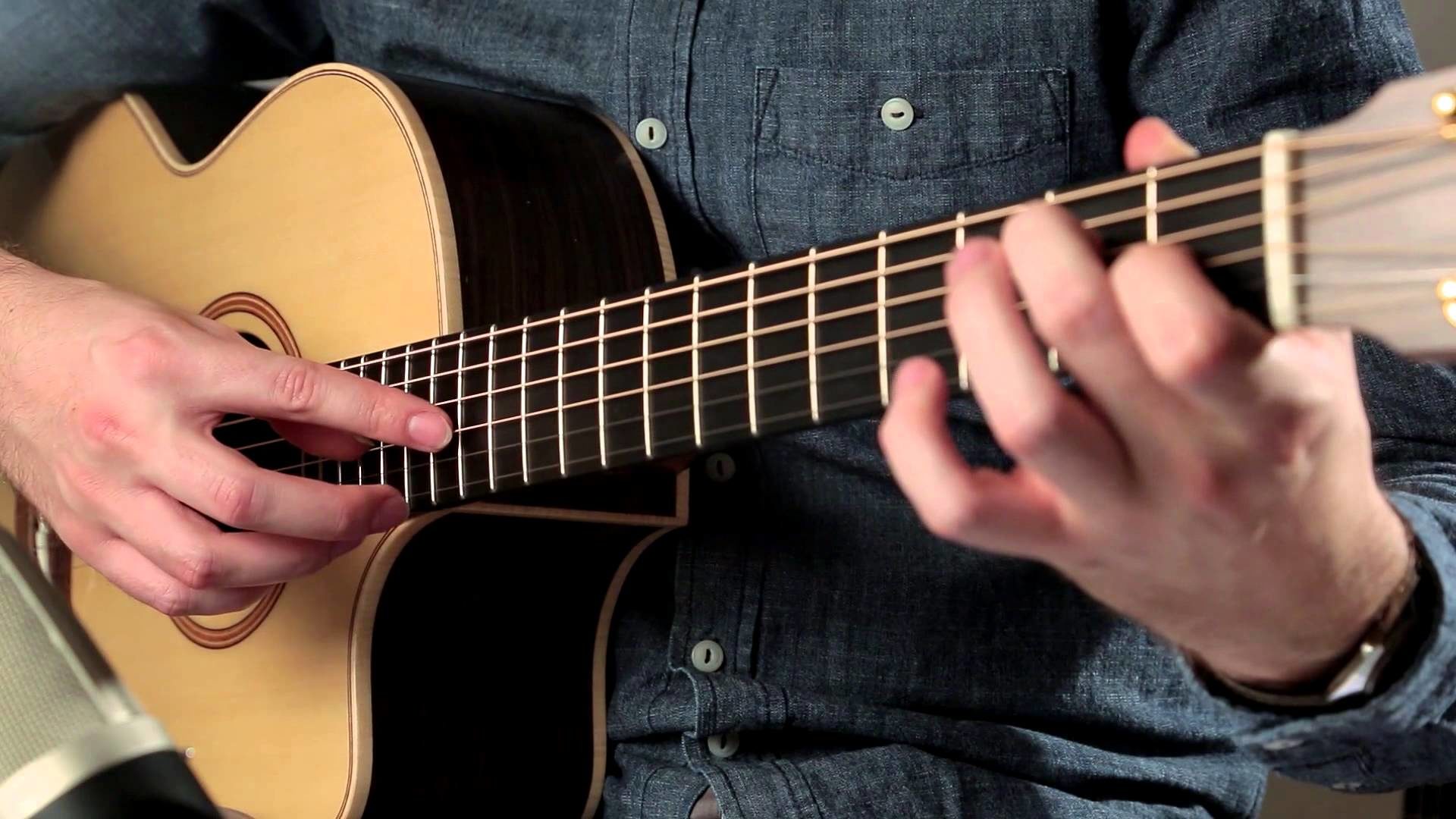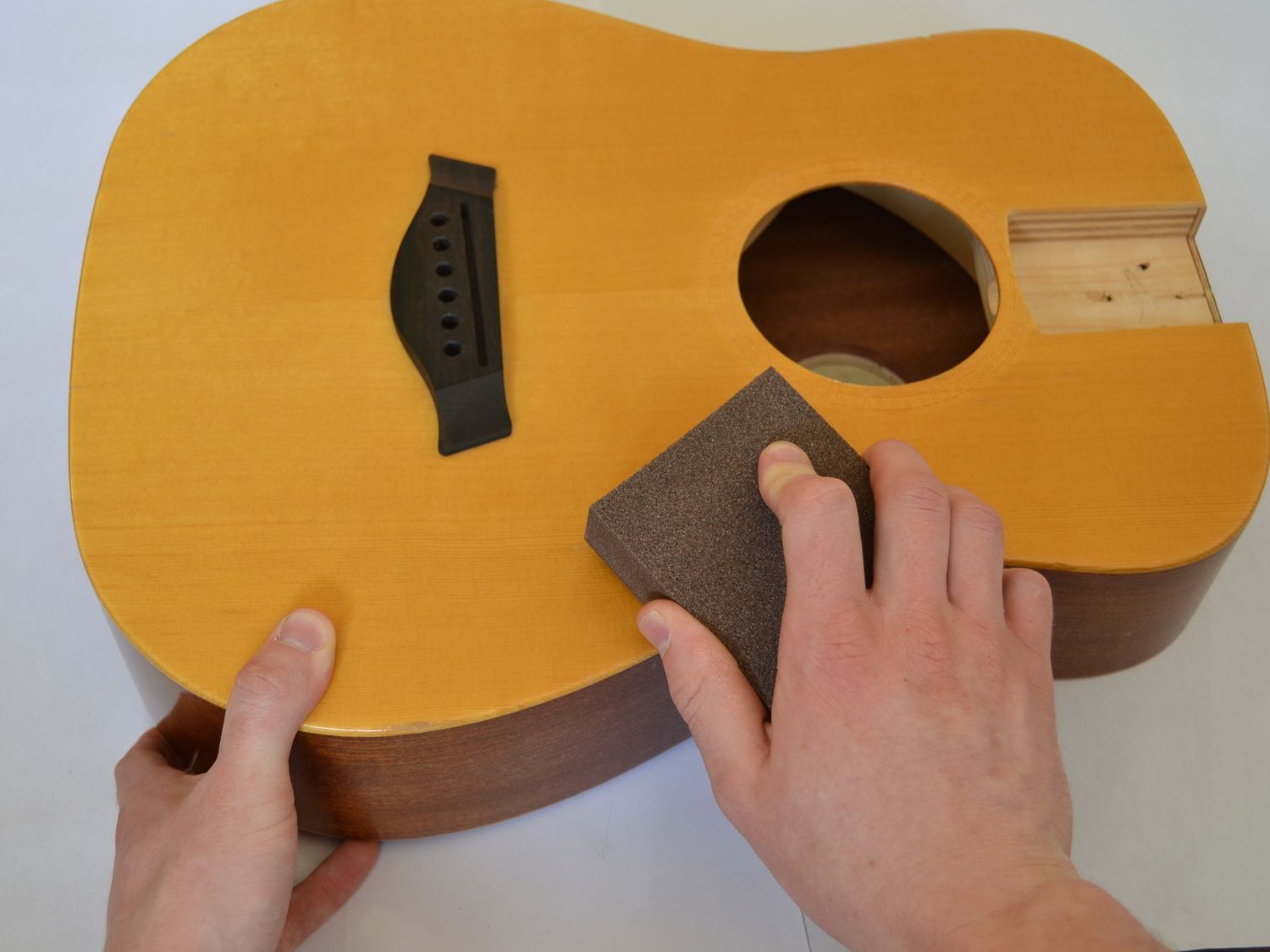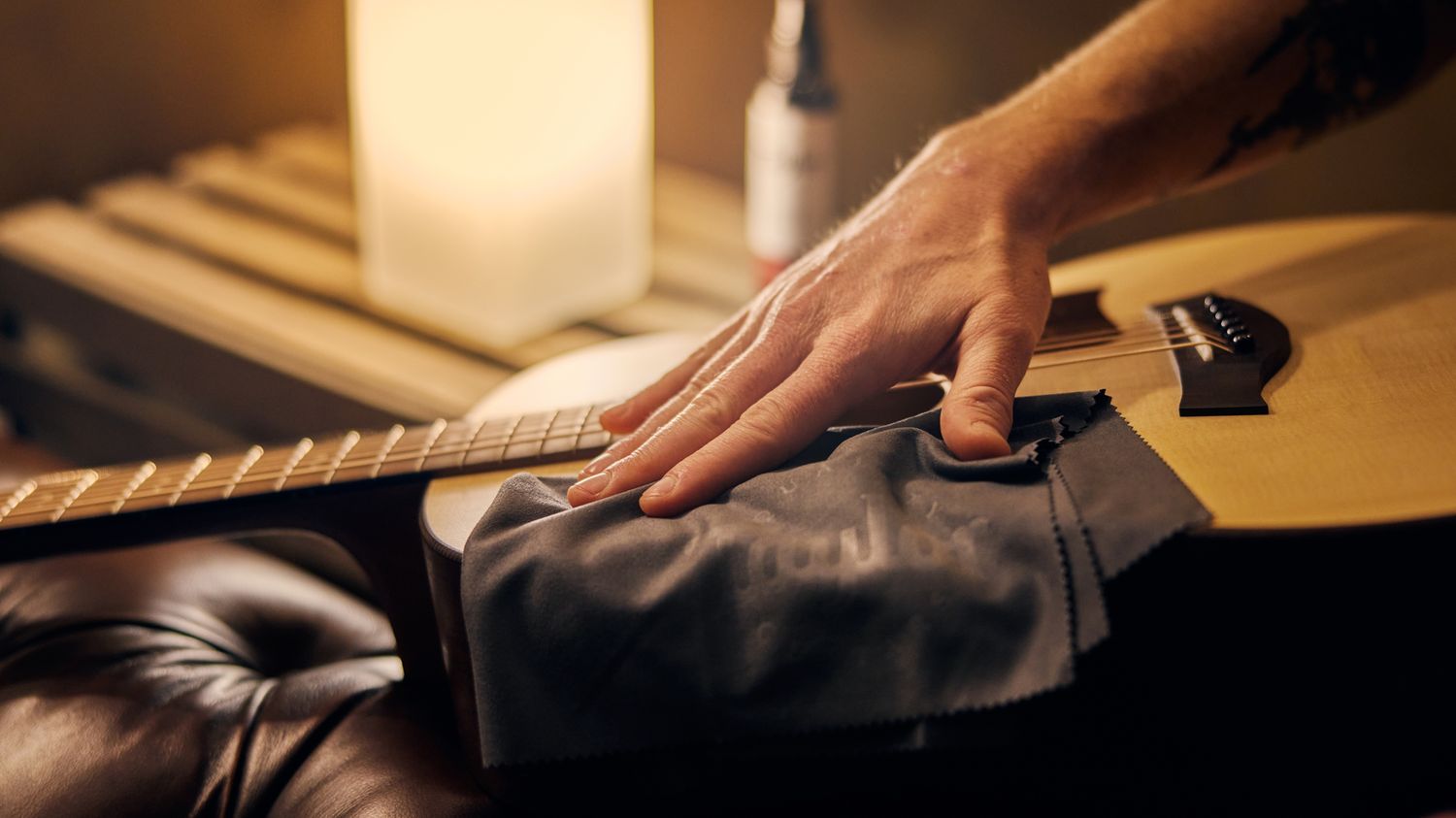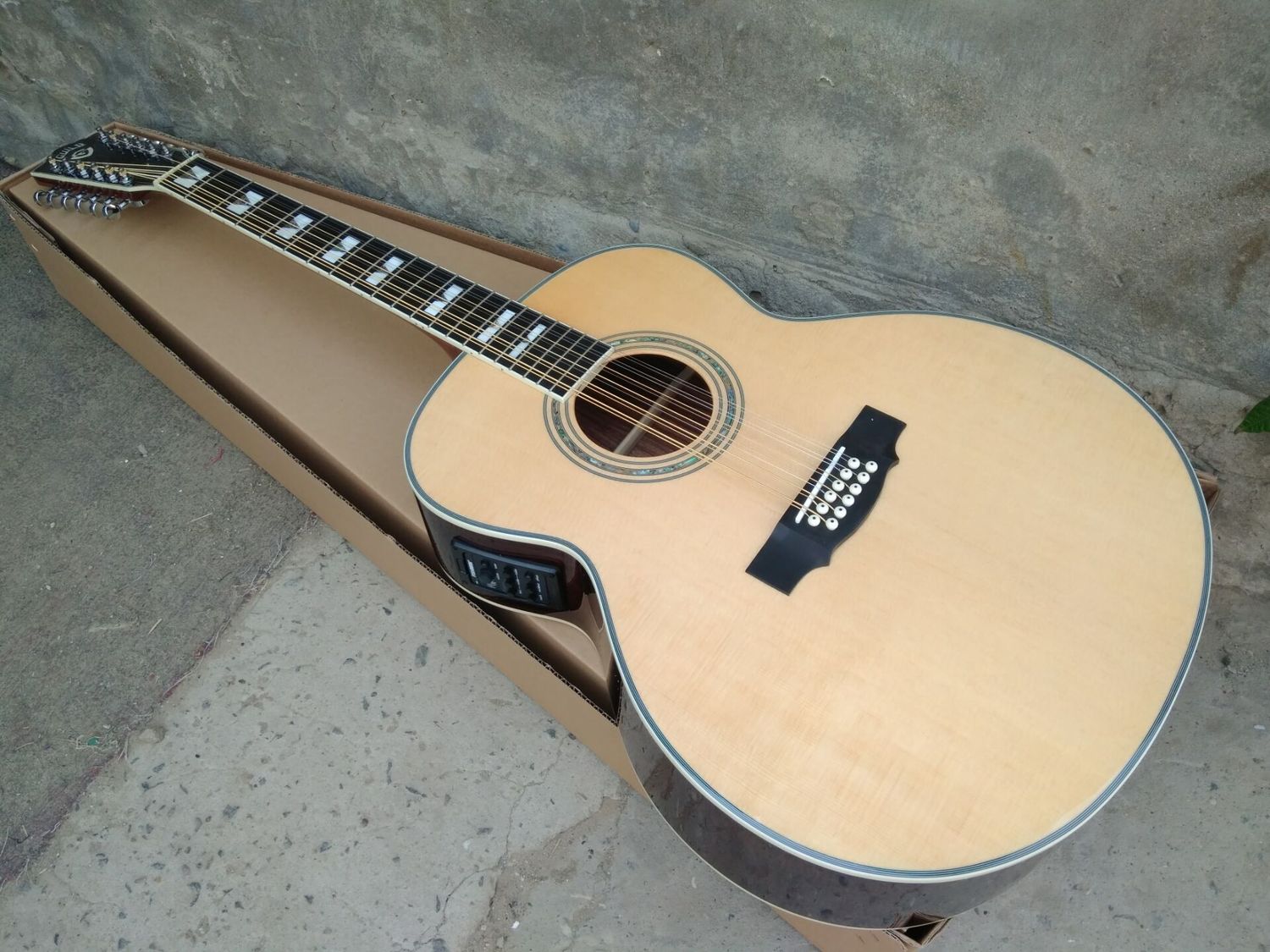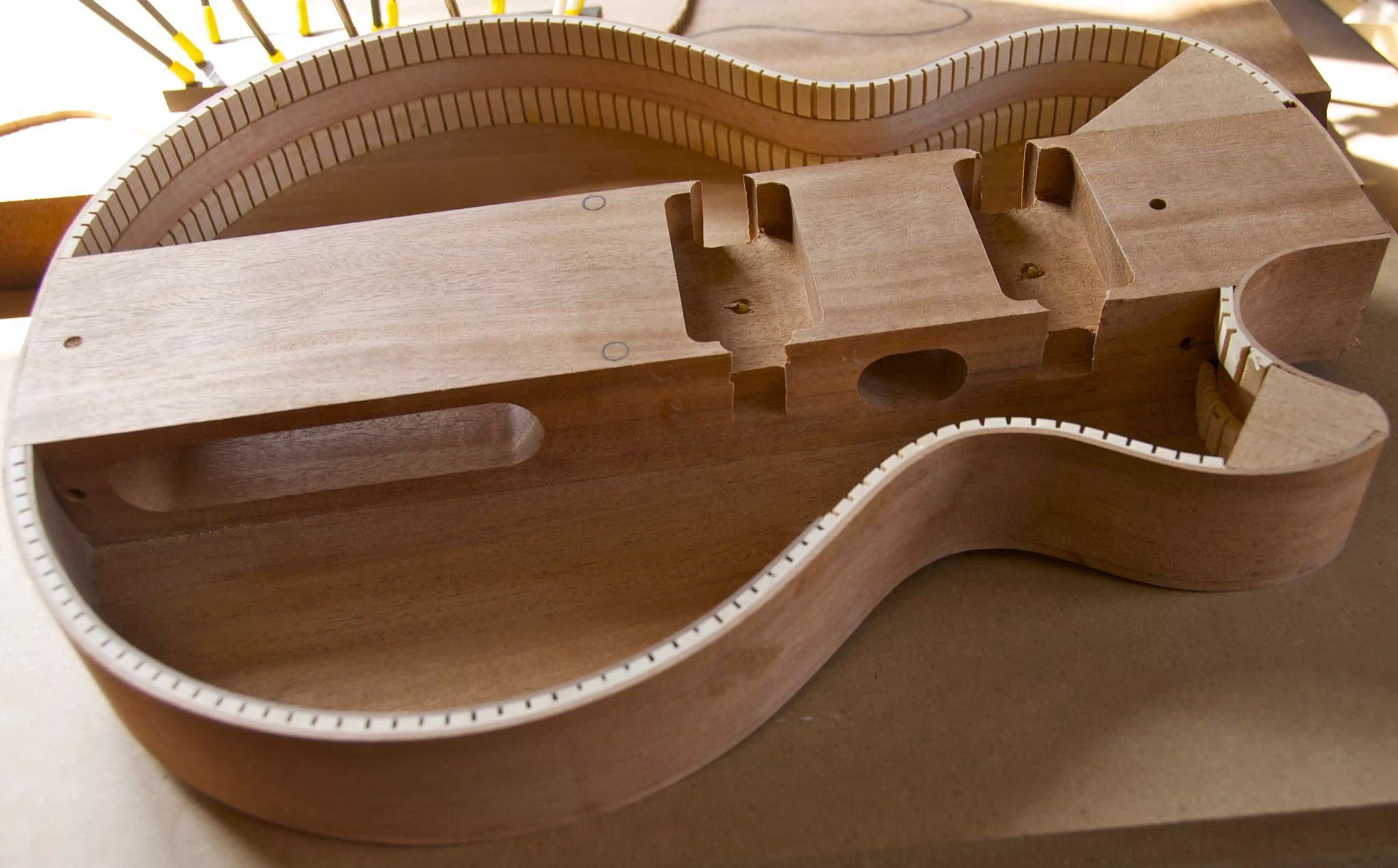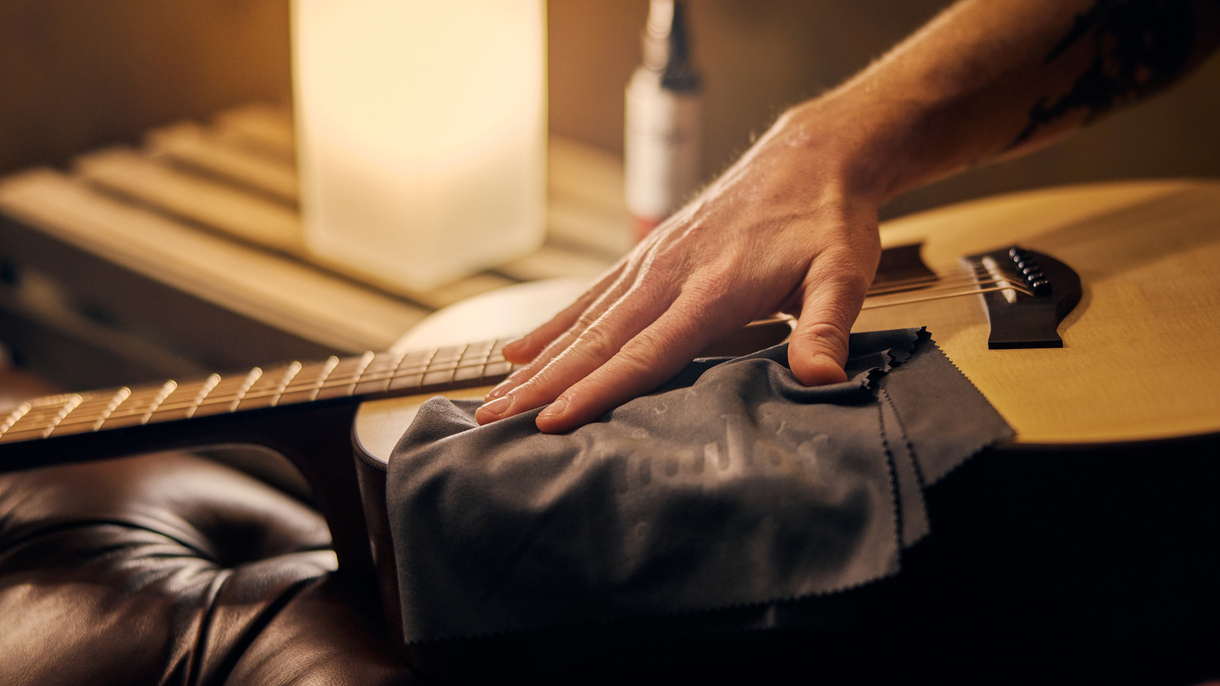Home>Production & Technology>Acoustic>How To Quiet An Acoustic Guitar


Acoustic
How To Quiet An Acoustic Guitar
Published: March 11, 2024
Learn effective techniques to quiet your acoustic guitar and reduce unwanted noise. Discover tips for improving your playing experience.
(Many of the links in this article redirect to a specific reviewed product. Your purchase of these products through affiliate links helps to generate commission for AudioLover.com, at no extra cost. Learn more)
Table of Contents
Introduction
Acoustic guitars are beloved for their rich, resonant tones and the intimate connection they foster between musicians and their music. However, despite their many virtues, acoustic guitars can sometimes produce unwanted noise, such as string buzz, fret noise, or excessive resonance. These issues can be particularly bothersome during recording sessions, live performances, or quiet practice sessions. Fortunately, there are several effective methods for quieting an acoustic guitar without compromising its sound quality.
In this comprehensive guide, we will explore various techniques and tools that can help mitigate unwanted noise from an acoustic guitar. Whether you're a seasoned performer, a recording artist, or a casual player looking to enhance your practice experience, these strategies will empower you to achieve a quieter, more controlled acoustic guitar sound.
From selecting the right strings to implementing dampening techniques, we will delve into the nuances of quieting an acoustic guitar. By understanding the underlying causes of excessive noise and resonance, you will be better equipped to address these issues and optimize your guitar's sound.
So, if you've ever found yourself frustrated by the unwanted noise emanating from your acoustic guitar, fear not. With the insights and tips provided in this guide, you'll be well on your way to enjoying a quieter, more harmonious playing experience. Let's embark on this journey to unlock the secrets of quieting an acoustic guitar and elevate your musical performance to new heights.
Understanding the Problem
Unwanted noise from an acoustic guitar can stem from various sources, and understanding the underlying issues is crucial to effectively addressing them. One common culprit is the resonance of the guitar body, which can cause excessive humming or booming sounds, particularly in the lower frequencies. Additionally, string buzz and fret noise can detract from the clarity and purity of the guitar's sound, leading to a less-than-ideal playing experience.
Furthermore, the action of the guitar, referring to the distance between the strings and the fretboard, can contribute to excessive noise. If the action is too low, the strings may come into contact with the frets, resulting in a buzzing sound. On the other hand, a high action can make the guitar more challenging to play and may lead to increased fret noise.
It's also important to consider the type of strings being used, as different materials and gauges can significantly impact the guitar's sound and playability. Lighter gauge strings may produce a brighter tone but are more prone to buzzing, while heavier gauge strings can offer a fuller sound but may require higher action to prevent buzzing.
In addition to these factors, the environment in which the guitar is played can also contribute to unwanted noise. Ambient room noise, feedback from amplification systems, and even the resonance of nearby objects can all affect the overall sound of the guitar.
By gaining a comprehensive understanding of these potential sources of noise, guitarists can take targeted steps to address each issue and achieve a quieter, more controlled sound. From selecting the right strings to making adjustments to the guitar's setup, the solutions to these problems are within reach.
Understanding the nuances of the problem is the first step toward effectively quieting an acoustic guitar. With this knowledge as a foundation, we can now explore the specific strategies and techniques that can help mitigate unwanted noise and enhance the overall playing experience.
Choosing the Right Strings
Selecting the appropriate strings for an acoustic guitar is a crucial consideration when aiming to achieve a balanced and controlled sound. The choice of strings can significantly impact the guitar's playability, tone, and susceptibility to unwanted noise. When seeking to quiet an acoustic guitar, several factors should be taken into account when selecting strings.
One key consideration is the string gauge, which refers to the thickness of the strings. Lighter gauge strings, such as those labeled as "extra light" or "light," are thinner and exert less tension on the guitar's neck and bridge. While lighter gauge strings can produce a brighter and more responsive tone, they are also more prone to buzzing, particularly if the guitar's action is set low. On the other hand, heavier gauge strings, such as "medium" or "heavy" sets, offer a fuller and more robust sound, with increased resistance to buzzing due to their higher tension. However, heavier gauge strings may require a higher action to prevent buzzing, and they can be more challenging to play, especially for beginners or those with less finger strength.
In addition to gauge, the material composition of the strings plays a significant role in shaping the guitar's sound and playability. Phosphor bronze and 80/20 bronze are among the most common materials used in acoustic guitar strings, each offering distinct tonal characteristics. Phosphor bronze strings tend to produce a warmer and mellower sound, with a slower initial brightness decay compared to 80/20 bronze strings, which are known for their bright and crisp tone. When aiming to minimize unwanted noise, the choice between these materials can influence the guitar's overall resonance and potential for excessive ringing or booming sounds.
Furthermore, coated strings, which are treated with a thin layer of polymer to resist corrosion and prolong their lifespan, can offer reduced finger squeak and string noise. The coating can help dampen the high-frequency overtones that contribute to unwanted noise, resulting in a smoother and quieter playing experience.
By carefully considering the string gauge, material composition, and coating options, guitarists can tailor their string selection to mitigate unwanted noise and achieve a more controlled and harmonious sound from their acoustic guitar. Experimenting with different string configurations and seeking guidance from experienced players or music professionals can provide valuable insights into finding the ideal strings to quiet an acoustic guitar while preserving its unique tonal qualities.
Adjusting the Action
Adjusting the action of an acoustic guitar is a fundamental step in achieving a balanced and controlled sound while minimizing unwanted noise. The action, which refers to the distance between the strings and the fretboard, significantly influences the playability and tonal characteristics of the instrument. By carefully adjusting the action, guitarists can mitigate issues such as string buzz, fret noise, and excessive resonance, ultimately enhancing the overall playing experience.
One of the primary considerations when adjusting the action is finding the optimal balance between playability and noise control. If the action is set too low, the strings may come into contact with the frets, resulting in a buzzing sound that detracts from the guitar's clarity and sustain. On the other hand, a high action can make the guitar more challenging to play, requiring greater finger strength and potentially leading to increased fret noise.
To address these concerns, guitarists can make precise adjustments to the guitar's saddle and nut height. By carefully filing the nut slots and adjusting the saddle height, the action can be tailored to suit the player's preferences while minimizing the risk of unwanted noise. It's important to approach these adjustments methodically, making incremental changes and evaluating the impact on playability and sound quality.
Additionally, the neck relief, or the slight curvature of the guitar neck, plays a crucial role in determining the action and overall playability. By making targeted truss rod adjustments, guitarists can optimize the neck relief to achieve a comfortable playing feel while minimizing the risk of fret buzz. However, it's essential to exercise caution when adjusting the truss rod, as over-tightening or loosening can lead to structural damage to the guitar.
Furthermore, the choice of strings and their gauge can influence the action's impact on noise control. Lighter gauge strings may require a lower action to prevent buzzing, while heavier gauge strings may necessitate a slightly higher action to maintain optimal playability without sacrificing sound quality.
By carefully considering these factors and making precise adjustments to the guitar's action, guitarists can effectively mitigate unwanted noise while optimizing the instrument's playability and tonal characteristics. Whether performing intricate fingerstyle arrangements or strumming vibrant chords, a well-adjusted action can empower guitarists to achieve a quieter, more controlled sound from their acoustic guitar.
Using a Soundhole Cover
A soundhole cover, also known as a feedback buster or sound rosette, is a simple yet effective accessory that can significantly reduce unwanted noise and feedback in an acoustic guitar. This unassuming device is designed to cover the soundhole of the guitar, thereby altering the instrument's resonance and minimizing the potential for excessive humming, booming, or feedback during performances or recording sessions.
Soundhole covers are available in various designs and materials, offering guitarists a versatile array of options to suit their specific needs and playing styles. These covers are typically crafted from materials such as rubber, silicone, or plastic, and are designed to fit snugly into the soundhole without causing damage to the guitar's finish or structure.
By inserting a soundhole cover into the guitar's soundhole, musicians can effectively dampen the internal resonance of the instrument, reducing the likelihood of unwanted noise and feedback. This is particularly beneficial in live performance settings, where ambient room noise and amplified sound can contribute to feedback issues, compromising the overall sound quality.
Furthermore, soundhole covers can be particularly advantageous for guitarists who employ percussive playing techniques, as they help minimize the transmission of percussive sounds through the soundhole, resulting in a cleaner and more controlled acoustic sound.
In addition to noise reduction, soundhole covers can also offer the practical benefit of minimizing the ingress of dust, debris, and moisture into the guitar's body, helping to maintain the instrument's longevity and playability.
When selecting a soundhole cover, it's essential to consider factors such as the size and shape of the soundhole, as well as the material and design of the cover. Some covers feature integrated feedback reduction technologies, further enhancing their noise-reducing capabilities.
Ultimately, using a soundhole cover can be a valuable tool for guitarists seeking to achieve a quieter and more controlled acoustic sound. Whether performing on stage, recording in the studio, or simply practicing at home, the addition of a soundhole cover can contribute to a more harmonious and enjoyable playing experience, allowing the natural beauty of the acoustic guitar to shine through without the interference of unwanted noise and feedback.
Dampening Techniques
Dampening techniques play a pivotal role in controlling the resonance and minimizing unwanted noise from an acoustic guitar. By strategically applying dampening methods, guitarists can achieve a more focused and controlled sound, enhancing the overall playing experience and sound quality.
One of the most widely used dampening techniques involves the utilization of specialized accessories such as foam or rubber dampeners. These dampeners are designed to be placed beneath the strings, near the bridge or the nut, effectively reducing the sympathetic vibrations that can lead to excessive ringing or buzzing. By strategically positioning these dampeners, guitarists can tailor the instrument's resonance to their preferences, achieving a quieter and more balanced sound.
In addition to physical dampening accessories, players can also employ their hands to dampen the strings and control the guitar's resonance. Techniques such as palm muting, where the palm of the hand is used to lightly rest on the strings near the bridge, can effectively reduce the sustain and ringing of the notes, resulting in a more controlled and subdued sound. Similarly, selectively using the fingers to dampen specific strings during playing can help minimize unwanted noise and enhance the clarity of the guitar's sound.
Furthermore, the strategic placement of felt or foam pads within the guitar's body can contribute to effective dampening of internal resonance. By strategically positioning these materials in areas prone to excessive vibration, such as the underside of the soundboard or near the bridge, guitarists can mitigate the risk of booming or humming sounds, achieving a more balanced and controlled acoustic sound.
Another popular dampening technique involves the use of a technique known as "palm muting," where the palm of the hand lightly rests on the strings near the bridge, reducing the sustain and ringing of the notes. This technique is particularly effective for controlling the resonance of individual notes and chords, resulting in a more focused and subdued sound.
Moreover, experimenting with alternate tunings can offer unique opportunities for dampening and controlling the guitar's resonance. Tunings such as drop D or open G can alter the tension and harmonic relationships between the strings, providing guitarists with new avenues for achieving a quieter and more controlled sound.
By incorporating these dampening techniques into their playing repertoire, guitarists can gain greater control over the instrument's resonance and achieve a quieter, more balanced sound. Whether performing intricate fingerstyle arrangements, strumming vibrant chords, or engaging in percussive playing techniques, the strategic application of dampening methods can elevate the acoustic guitar's sound to new heights, allowing for a more nuanced and captivating musical expression.
Conclusion
In conclusion, quieting an acoustic guitar involves a multifaceted approach that encompasses various aspects of the instrument's setup, playing techniques, and the strategic use of accessories. By understanding the underlying causes of unwanted noise and resonance, guitarists can implement targeted strategies to achieve a quieter, more controlled sound without compromising the instrument's unique tonal qualities.
The journey to quieting an acoustic guitar begins with a comprehensive understanding of the potential sources of unwanted noise, including string buzz, fret noise, excessive resonance, and environmental factors. By recognizing these issues, guitarists can embark on a path toward effective noise mitigation and enhanced sound quality.
Selecting the right strings is a pivotal step in achieving a balanced and controlled acoustic sound. By carefully considering factors such as string gauge, material composition, and coating options, guitarists can tailor their string selection to minimize unwanted noise and achieve a harmonious playing experience.
Adjusting the action of the guitar is equally essential, as it directly impacts playability and noise control. By making precise adjustments to the saddle height, nut slots, and neck relief, guitarists can optimize the action to mitigate string buzz and fret noise while maintaining the instrument's overall tonal characteristics.
The strategic use of a soundhole cover can significantly contribute to noise reduction and feedback control, particularly in live performance settings. By incorporating a soundhole cover into their setup, guitarists can dampen internal resonance and minimize the potential for unwanted noise and feedback, resulting in a more focused and controlled acoustic sound.
Dampening techniques, including the use of specialized accessories, hand techniques, and alternate tunings, offer valuable avenues for controlling the guitar's resonance and achieving a quieter sound. By strategically applying these techniques, guitarists can enhance the clarity and balance of the instrument's sound, allowing for a more nuanced and captivating musical expression.
In essence, quieting an acoustic guitar is a dynamic and personalized endeavor that empowers guitarists to optimize their instrument's sound while preserving its inherent character. By integrating the insights and techniques presented in this guide, musicians can embark on a journey toward achieving a quieter, more harmonious acoustic sound, unlocking new possibilities for musical creativity and expression.



